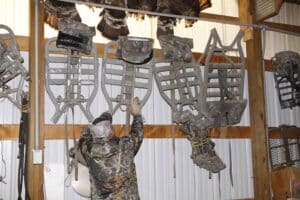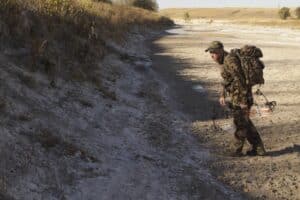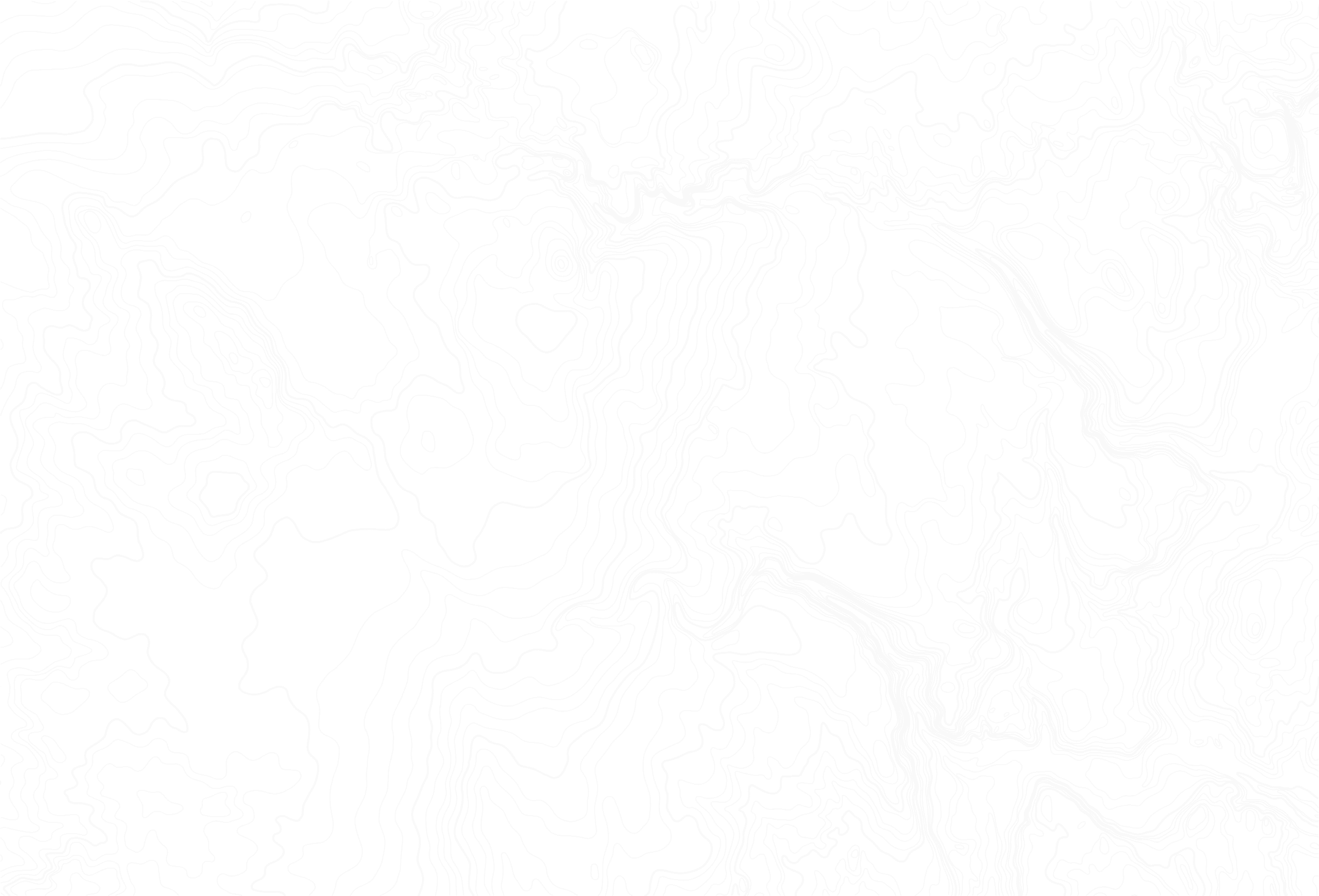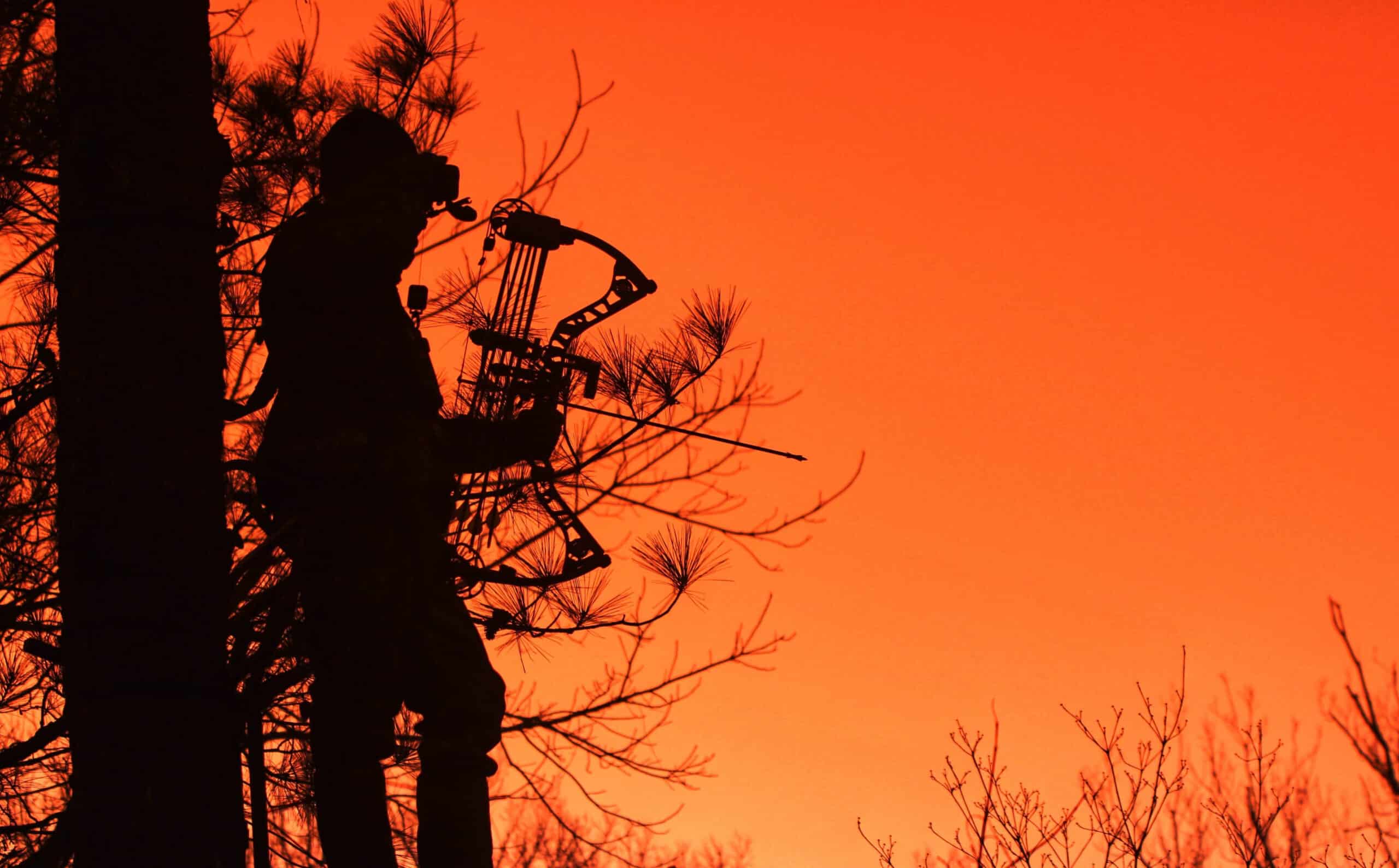Are You Overhunting Your Stand?
My confidence swelled as the buck appeared on the bank opposite of the dry riverbed. He was moving early and standing at the junction of two trails. One trail led him down the bank to arrive right below my stand. The other veered off into a jungle of willows with no hopes for a bow shot. Pausing at the junction, I could almost see the gears turning in the buck’s mind as he considered the options. Then, as if something in my direction concerned him, he disappeared into the willows.
Who knows what caused that buck to take an exit away from my favorite stand? Looking back at that hunt and many others, I surmised I may have been overhunting my stands. Deer will not text you the answer, but their actions or lack of sightings could surely be a clue in your favoritism to an ambush location.
Do Deer Know You Are There?
Human nature forces many into a path-of-least-resistance lifestyle. People prefer easy street as opposed to something that makes them uncomfortable. How often do you cozy up to a stand because it consistently produces? And why not? Once you know the area, have confidence in it and keep entertained by deer sightings, why would you not revisit it repeatedly?
I am with you on this, but you must remember, deer are watching you like you are watching them. They do not have trail cameras and the best optics, but they do have senses that rival any online Norton Security package. Even the scent you may leave on your way in and out of a stand causes them to think twice about returning to an area, possibly your ambush area.
Although my experiences relate from hunches, much research has been completed on hunting pressure and how deer react. Some were conducted on public lands and most of the recent studies include GPS tracking. Results show that deer behavior changes dramatically as hunting intensity increases.
One University of Nebraska-Lincoln School of Natural Resources study, “Impacts of Human Hunting on Spatial Behavior of White-Tailed Deer,” followed 45 adult deer through the 16-day Nebraska firearm hunting season. The study reveals that even with the extra deer movement induced by the rut, hunting pressure prompted deer to decrease movement and transition to nocturnal travel. Researchers believed that deer feel more confident moving at night due to the absence of hunters.
One interesting note is that many of the studies show that once hunting pressure is removed, normal deer behavior returns in as little as three days. Of course, if you hunt an area continually over the course of your hunting vacation, it may not receive a rest. Here is how to recuperate an over-hunted area.
Network Of Stands
To avoid overhunting an area, consider a network of stands. That means you will need to invest in a few more stands or blinds. Breathe easy, the investment benefits you with invisibility and non-consistency in your hunting routine. Set up a network of ambush traps to keep deer guessing.
By definition, a network is “a coordinated system of people or things that work together as a unit or system.” You may already have a couple stands placed to take advantage of variable wind directions. A true network develops a system that considers wind direction, deer travel traits, food sources, bedding cover and if you vary their use, it erases intense hunting pressure. The system allows you to adjust quickly and quietly to a new stand to avoid consistency and take advantage of variables like wind. Set right, networks also take advantage of the variable schedule deer follow. Ambushes should look at locations for morning and afternoon encounters, plus locations that could keep you in action all day if you decide to spend an entire day in the woods.

Timing Is Everything
For a network to help you not overhunt a stand, consider variables beyond the obvious. You need to see into the future and that begins before the leaves turn colors, but continues throughout the season.
Whitetails vary their feed preferences throughout the year as plants bloom, crops mature and acorns drop. Keeping track of these changing preferences through visual confirmation, insight from other deer enthusiasts and photographic evidence from trail cameras, is vital for a successful stand network.
During summer, high-protein crops in fields lure bucks from the shadows to take advantage of the lush buffet. As those crops head to market, deer quickly adapt and change travel, nutrition and bedding options.
Hardwood’s hunters realize the importance of tracking the changing food sources. If a forested area has an unusually large acorn crop, bucks will alter travel schedules to take advantage of the bounty. Acorns provide a high-energy food source to charge their batteries for the tolls of the rut. Corn and even apple trees lure deer in autumn for this same reason. Still, do not overlook crops such as alfalfa with new growth after haying. That succulence may still be attracting large numbers of deer, especially females. Does seldom stray far from their core area and a large density of does will eventually lure bucks as the rut progresses.
Always Have An Exit Strategy
Lastly, having stand options lessens the odds of deer patterning you, but to decrease those odds further, have purpose when you walk into your stand. Avoid repeated route usage, stay off deer trails and know where deer are at all times of the day to avoid any possible encounters.
Search for backdoor entrances that allow you to access your ambush without revealing your form, scent and even noise. My go-to is to look for coulees and draws that lead up to my ambush point with a predominately downwind advantage. That way I can enter or leave the stand, or blind, via the depression to disappear. This pays off in a big way while hunting edges at night. Deer will accumulate on the fields making it nearly impossible to exit without spooking them. Wait until dark and quietly slide out the backdoor into the depression. Dry creek beds also provide this veil.

Again, trail cameras rock in delivering this information, but good old detective work in observing rubs, scrapes and watching fields also gives you reams of information on preferred deer travel routes you should avoid in the least intrusive manner.
After seeing the buck use the willow alleyway, I conjured up a plan. On my next visit I arrived early. Masked by breezy conditions, I set a stand just inside the willow jungle in a cottonwood that was downwind of the winding trail. Before climbing into the stand, I misted a dose of estrus scent across the trail. Like the time before, the buck arrived during shooting light and took the willow off ramp for an encounter right under me. As he paused to sniff the scent, I ended my archery season by not overhunting my preferred stand.


Featured
Juicy homemade jalapeno cheddar brats are perfect for grilling all summer long. They’re packed with all the right seasonings and fresh ingredients, making them extra tasty.

Featured
MeatEater and Moultrie Mobile join teams to bring hunters closer to nature.

Featured
These wild turkey skewers are tender and smothered in a homemade teriyaki glaze. Wild turkey sometimes gets a bad reputation for being a tough meat but when prepared properly using the steps in this recipe, the results are amazing.



